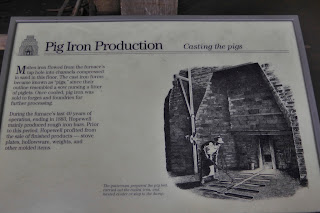I have not made a blog entry for a few days so I thought I better place one before you all think that we have met a terrible fate. However, in reality, we have been enjoying our friends, Nick and Ellie Hilosky, whom I have known for over 50 years. Nick and I played in bands together during our youth and this was how I earned money to pay for my college at Drexel University (Drexel Institute of Technology in those days.) I am the geek with the guitar and Nick is the handsome devil with the accordion. :) Later we added my brother David on bass and my brother Richard on drums.
During our stay with our friends, while they worked, Earline and I visited other friends and explored the area. Earline had never really visited Valley Forge so we went there one day. It has changed a lot from when I was a child. There is a new visitor's center and a driving path around the park to explain the different areas of encampment. As you are no doubt aware, there was no battle at Valley Forge, but rather it was a harsh winter encampment of the troops where many perished from lack of supplies.
Visitor's Center
Log cabins for winter encampment
Washington's Headquarters
Memorial Arch
Throughout the years, there was a rumor that there was an escape tunnel under the headquarters to allow George Washington to escape should the British arrive. I remember as a boy going into the tunnel that led to the river. I asked the park ranger about the tunnel and was told that it was only a root cellar. Still, I know there was a tunnel, but the purpose may not have been for escape or perhaps the historical revisionists would prefer we think of Washington in the highest possible manner?
We also visited historic Saint Peter's Village.
Saint Peters is a community located in Chester County, Pennsylvania. The village is a historic 19th century industrial 'company village' at the Falls of French Creek in Warwick Township.
The town is located in a narrow ravine along French Creek. The Falls of French Creek have formed where French Creek cuts across a series of diabase (trap rock) dikes.[2] Erosion of the diabase dikes by the creek has caused huge boulders to fall into the stream, almost filling the creek bed at points.[3][4] The igneous intrusion that produced these diabase dikes also replaced limestone ormarble in the surrounding rock with iron ores.[2][5]
The presence of iron ore led to the establishment of the French Creek iron mines in 1845. In 1880, quarrying of the diabase, known locally as "black granite",[5] began, and the "Excursion House" hotel opened, distinguishing the community as both an industrial village and recreational weekend retreat. The bulk of the residence and businesses were built following the hotel's opening.
Spurs of the Wilmington and Northern and Delaware River and Lancaster railroad lines once ran through the village servicing the local mining, forging and quarrying operations.
By the early 1970s industrial operations had ceased and the village was developed by its owners as a local tourist destination. Owned until 1978 by the Knauer family, it subsequently changed hands several times and portions of it are now privately owned. Historical preservation efforts, however, have led to the appearance of the village today that is almost entirely of its historic period. Local ordinances prevent exterior alterations to historic structures and limit new construction in designated areas in and around the village.
The main street, St. Peter's Road, is lined with private residences, a hotel and restaurant, and number of small specialty shops. The boulder-strewn French Creek running directly adjacent is one of the area's most popular attractions.
Saint Peters Village was entered onto the National Register of Historic Places in 2003.
Another interesting place that we visited was the Hopewell Furnace.
This site demonstrates what it took to produce iron for use in castings. One needed a source of running water to drive a large water wheel to drive bellows for the furnace. You needed a source of charcoal to mix with limestone and iron ore to make iron so it required nearby forests and mines. The entire operation required a village of people to service the needs of the iron master who directed the process. I would highly recommend that you visit this place if in the area.
The Iron Master's House
Charcoal Wagon
Early Anthracite Furnace
Collier's Hut - They tend the charcoal pile
The Company Store
The Company Store
Casting of cannon
Iron Master's House
Pig Iron































No comments:
Post a Comment